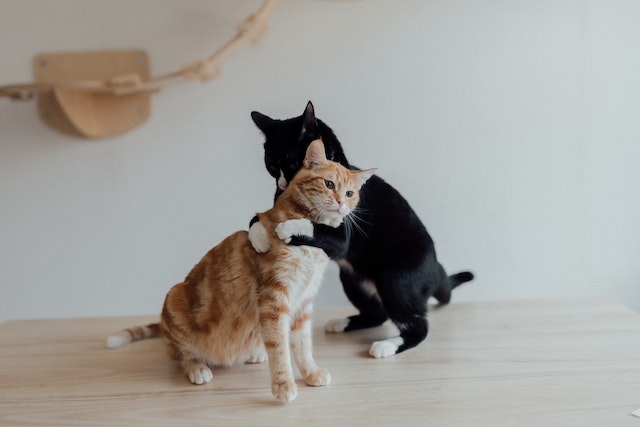How do you make a multi-cat household happy?

More than half of cat owners have two or more cats in their homes. Keeping multiple cats can be incredibly rewarding, especially witnessing their interactions. However, challenges may arise, such as food, water, and territory disputes, and even squabbles over who gets the prime spot on their human’s lap. Moreover, the more cats you have, the more litter box issues you might encounter. In this article, we’ll provide you with insights into managing a multi-cat household effectively.
While owning multiple cats comes with benefits, it also presents challenges. For instance, it can subject each cat to increased stress, leading to behaviours like territorial spraying, improper litter box usage, and even anxiety-related ailments such as idiopathic cystitis.
How do you make a multi-cat household happy?
One of the key techniques in managing a multi-cat household is to ensure ample resources and space for each cat. When each cat has secure options for eating, sleeping, eliminating, and playing, their feline lives become more content.
If you’re adopting more than one cat, there are various strategies to help them coexist peacefully. These techniques are invaluable in promoting harmonious living among your feline companions.
Tips for Managing a Multi-Cat Household
- Introduce Gradually: Throwing cats together haphazardly is a recipe for disaster. A new cat faces unfamiliar surroundings and cats, while existing cats might view the newcomer as a threat. Begin by isolating the new cat in a separate room with litter box, food, water, hiding spots, and toys. Gradually introduce the cats after about a week and proceed with face-to-face introductions.
- Provide Private Spaces: Cats are solitary creatures, and multi-cat living is unnatural. Even feral cats, while they may hunt or find water together, also have separate private spaces for solitude. Ensuring each cat has a secure place to nap or relax is crucial. Most cats love vertical spaces, like cat trees, and enjoy cardboard boxes and window perches. Make sure each cat has its own resting area, as personal space is vital. Additionally, offer enough scratching posts for enjoyment; every cat should have its scratching post, as scratching marks territory.
- Offer Hideouts: Ensure each cat has a hiding place for safety or alone time. An open cardboard box can serve as a retreat.
- Manage Litter Boxes: Typically, cats won’t share a litter box. Lower-status cats instinctively avoid higher-status cats’ boxes—a sign of respect. Thus, if you have multiple cats, you’ll need one more box than the number of cats you own. Place litter boxes in various locations, ensuring quiet and discreet spots.
- Provide Ample Toys: Keep your cats entertained with an array of toys. Interactive toys, like rotating toys, are particularly appealing to cats.
- Multiple Water Bowls and Food Varieties: Food is critical to a cat’s survival, and they instinctively protect it. For multiple cats, provide several feeding stations, spaced apart to prevent conflicts.
- Ensure Sufficient Exercise: Cats can become obese without enough exercise. Interestingly, if one cat gains weight, others may follow suit. As the saying goes, ‘birds of a feather flock together.’ Regular interactive play sessions with your cats not only provide exercise but also strengthen your bond.
- Maintain Peace: Not all multi-cat households are peaceful. Arguments and minor conflicts may arise. In such cases, separate the cats promptly and relocate each to a different room, easing their tension.
By following these guidelines, you can foster a peaceful, harmonious environment in your multi-cat household and ensure that each feline companion thrives.
